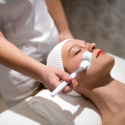- Europa
-
- Amstetten(7)
- Bad Schallerbach(1)
- Baden(4)
- Berg(1)
- Braunau am Inn(5)
- Bregenz(3)
- Bruck an der Mur(1)
- Graz(4)
- Hartberg(1)
- Innsbruck(5)
- Kemmelbach(1)
- Kitzbühel(4)
- Klagenfurt(5)
- Krems an der Donau(1)
- Kufstein(5)
- Leibnitz(1)
- Lienz(1)
- Liezen(1)
- Linz(5)
- Oetz(1)
- Punitz(1)
- Radstadt(1)
- Salzburg(5)
- St Polten(2)
- Steiermark(1)
- Steyr(1)
- Steyregg (1)
- Traun(3)
- Vienna(26)
- Villach(5)
- Völkermarkt(1)
- Wels(5)
- Wien(1)
- Wiener Neustadt(4)
-
- Aalst(1)
- Aarschot(2)
- Affligem(1)
- Anderlecht(5)
- Antwerp(11)
- Antwerpen(1)
- Arlon(6)
- Ath(2)
- Aubange(5)
- Bastogne (2)
- Blankenberge (1)
- Bruges(5)
- Brussels(15)
- Charleroi(5)
- Deinze(3)
- Dendermonde(1)
- Diest(2)
- Etterbeek(5)
- Geel(1)
- Genk(5)
- Gent(6)
- Geraardsbergen(1)
- Grimbergen (2)
- Hasselt(5)
- Heusden- Zolder(2)
- Ieper(1)
- Izegem(1)
- Knokke(4)
- Kortrijk(2)
- La Louviere(2)
- Leuven(5)
- Liege(4)
- Limburg(4)
- Lommel(1)
- Mortsel(1)
- Oostende(1)
- Turnhout(1)
-
- Chelyabinsk(1)
- Dubna(4)
- Gelendzhik(1)
- Irkutsk(1)
- Kaliningrad(1)
- Kazan(4)
- Krasnodar(3)
- Krasnoyarsk(1)
- Maykop(1)
- Moscow(50)
- Nizhny Novgorod(4)
- Novosibirsk(1)
- Omsk(1)
- Penza(1)
- Rostov-on-Don(2)
- Saint Petersburg(13)
- Samara(1)
- Saratov(1)
- Serpukhov (2)
- Sevastopol(3)
- Sochi(5)
- Stavropol(1)
- Surgut(1)
- Tyumen(2)
- Ufa(2)
- Vladivostok(3)
- Yekaterinburg (11)
-
- Alicante(8)
- Barcelona(113)
- Benalmadena(1)
- Benidorm(7)
- Castellón de la Plana(1)
- Denia(1)
- Estepona(1)
- Fuengirola (3)
- Ibiza(49)
- Jerez de la Frontera(1)
- Lanzarote(1)
- Las Palmas de Gran Canaria(5)
- Madrid(57)
- Malaga(9)
- Marbella(48)
- Murcia(1)
- Oviedo(1)
- Palma de Mallorca(48)
- Puerto Banus(3)
- Seville(1)
- Tarragona(1)
- Tenerife(7)
- Torrevieja(3)
- Valencia(9)
- Vigo(1)
- Zaragoza(1)
- Worldwide
The Sun's Impact on Health: Benefits and Risks
 Throughout centuries, beauty standards have continuously evolved: from aristocratic paleness to athletic tans. These shifts weren't merely fashionable but responded to social norms, religious beliefs, and medical insights.
Throughout centuries, beauty standards have continuously evolved: from aristocratic paleness to athletic tans. These shifts weren't merely fashionable but responded to social norms, religious beliefs, and medical insights.The tan trend was introduced by Coco Chanel, coinciding with urbanization and industrialization, which kept more people indoors. Medical discoveries, like the identification of the tuberculosis bacterium, led doctors to prescribe sun exposure as a preventive measure, as sunlight was found to affect disease-causing agents. Sunlight and fresh air became integral to a healthy lifestyle and the prevention of numerous illnesses.
In the 1920s, Coco Chanel returned from the Mediterranean with a subtle tan, sparking a trend among bohemians. From then on, spending summers on the French Riviera became fashionable for movie stars, singers, and the affluent.
By the 1980s and 1990s, the popularity of tanned skin waned due to medical revelations. Scientific evidence linked sun exposure to accelerated skin aging and increased risks of melanoma, a form of skin cancer.
To Tan or Not to Tan?
The debate has persisted over the years, complicated by conflicting information about sunlight's impact on health. Let's weigh the pros and cons before deciding whether to "tan" or "not to tan."
Benefits
Sunlight encompasses infrared and ultraviolet rays. Infrared rays stimulate essential bodily processes, while ultraviolet radiation exhibits potent bactericidal properties. These rays benefit acne-prone skin, aid in wound healing, and combat fungal infections and conditions like psoriasis.
Infrared light prepares retinal cells for renewal, promoting optimal vision.
Sunlight regulates our circadian rhythms, enhancing daytime activity and nighttime restfulness.
Ultraviolet rays prompt the skin's production of beta-endorphins, elevating mood, and serotonin, improving overall well-being. Light therapy has proven effective in treating depression.
Infrared radiation also acts as a natural pain reliever.
Ultraviolet rays stimulate nitric oxide production, enhancing microcirculation, energy production in cells, and cardiovascular health. Increased microcirculation benefits brain function and overall nervous system health.
Sunlight aids in vitamin D3 synthesis, crucial for calcium and phosphorus absorption, essential for bone and dental health. Vitamin D3 also exhibits neuroprotective and anticancer properties.
Sun exposure accelerates metabolism, aiding in weight management.
Vitamin D3 supports thyroid function, adrenal glands, pituitary gland, immune system, and balances cholesterol levels.
Sunbathing benefits asthmatics by improving respiratory function.
Risks
Excessive sun exposure, inadequate protection, and lack of preventive measures lead to sunburn, particularly affecting fair-skinned individuals due to lower melanin production.
High doses of ultraviolet radiation increase the risk of melanoma, a deadly form of skin cancer.
Overexposure to sunlight dehydrates the skin and damages collagen structure, accelerating aging and causing wrinkles.
Prolonged exposure to infrared rays can overheat the body, leading to heatstroke symptoms like dizziness, nausea, vomiting, increased body temperature, and dehydration, requiring immediate medical attention.
Ultraviolet radiation can cause retinal burns and contribute to cataract development.
Excessive sunlight stresses the body and can either weaken or overly stimulate the immune system, both detrimental to health.









